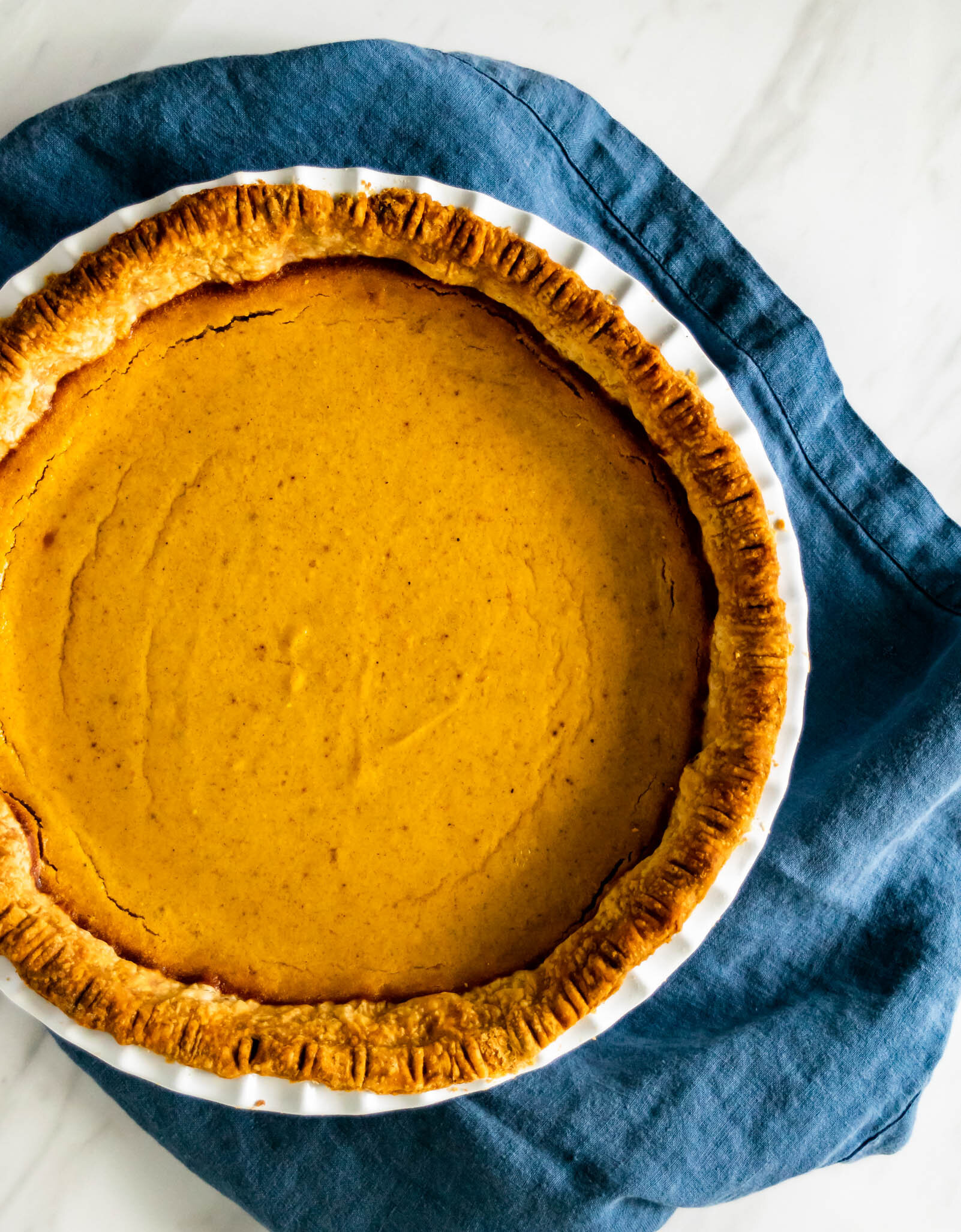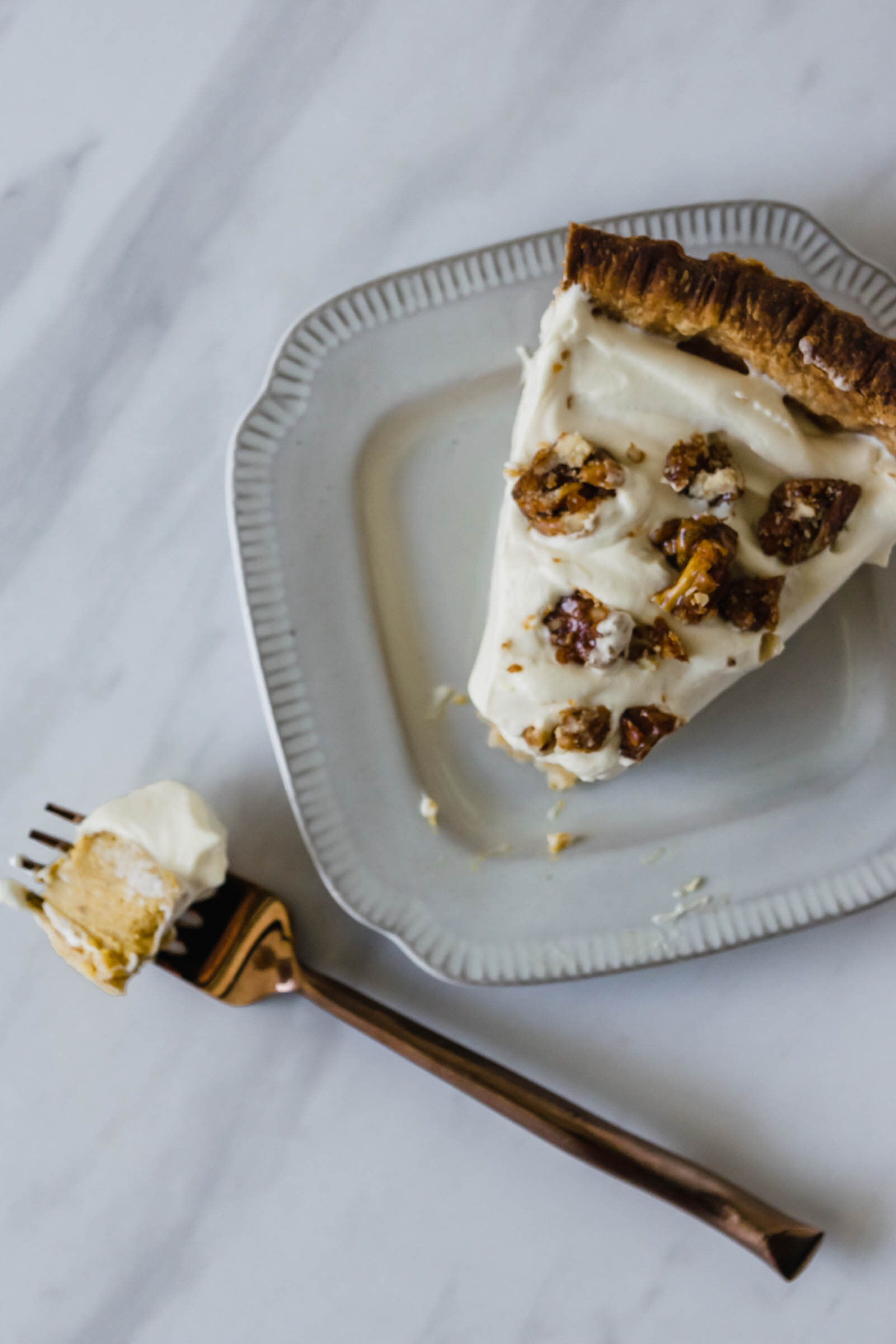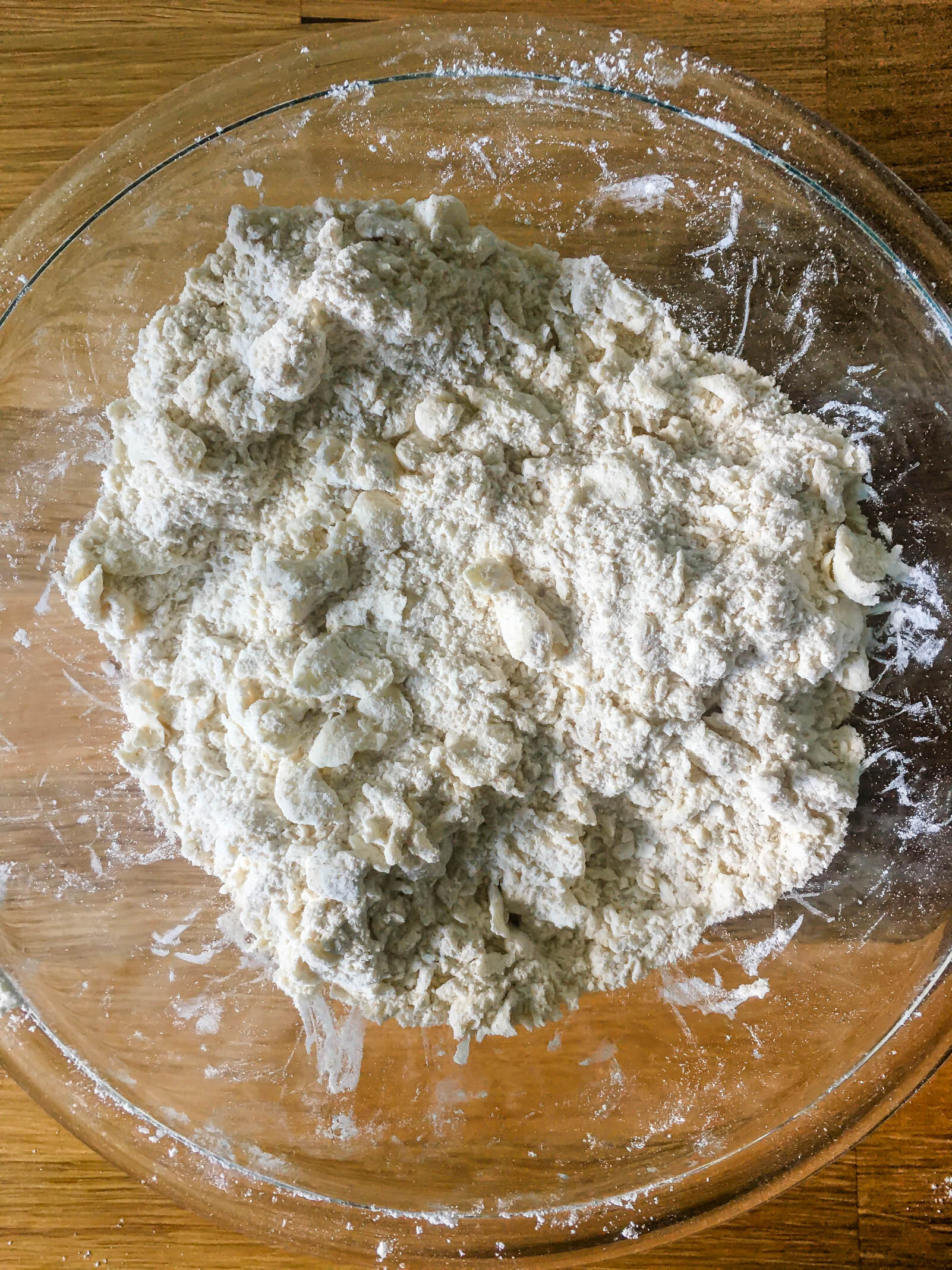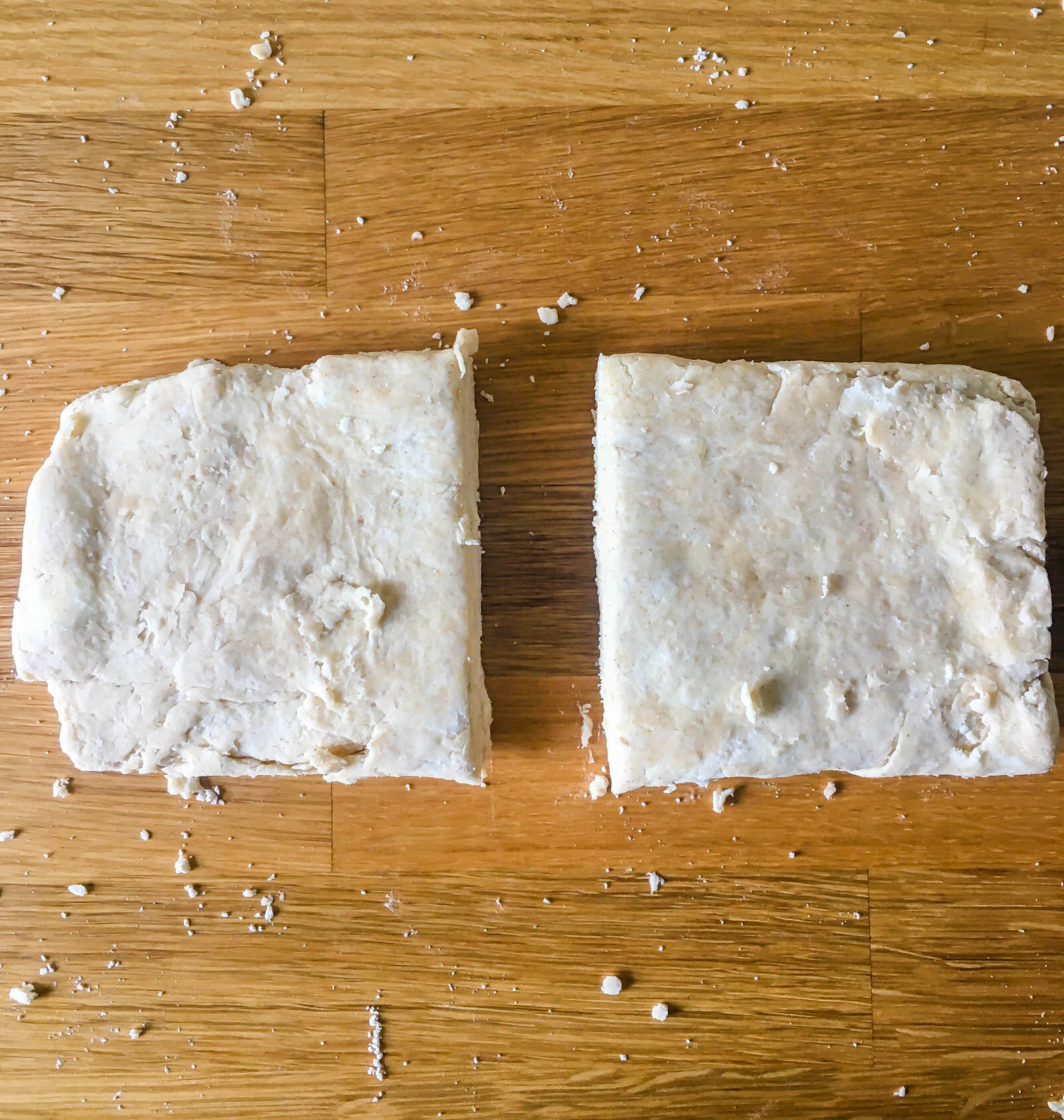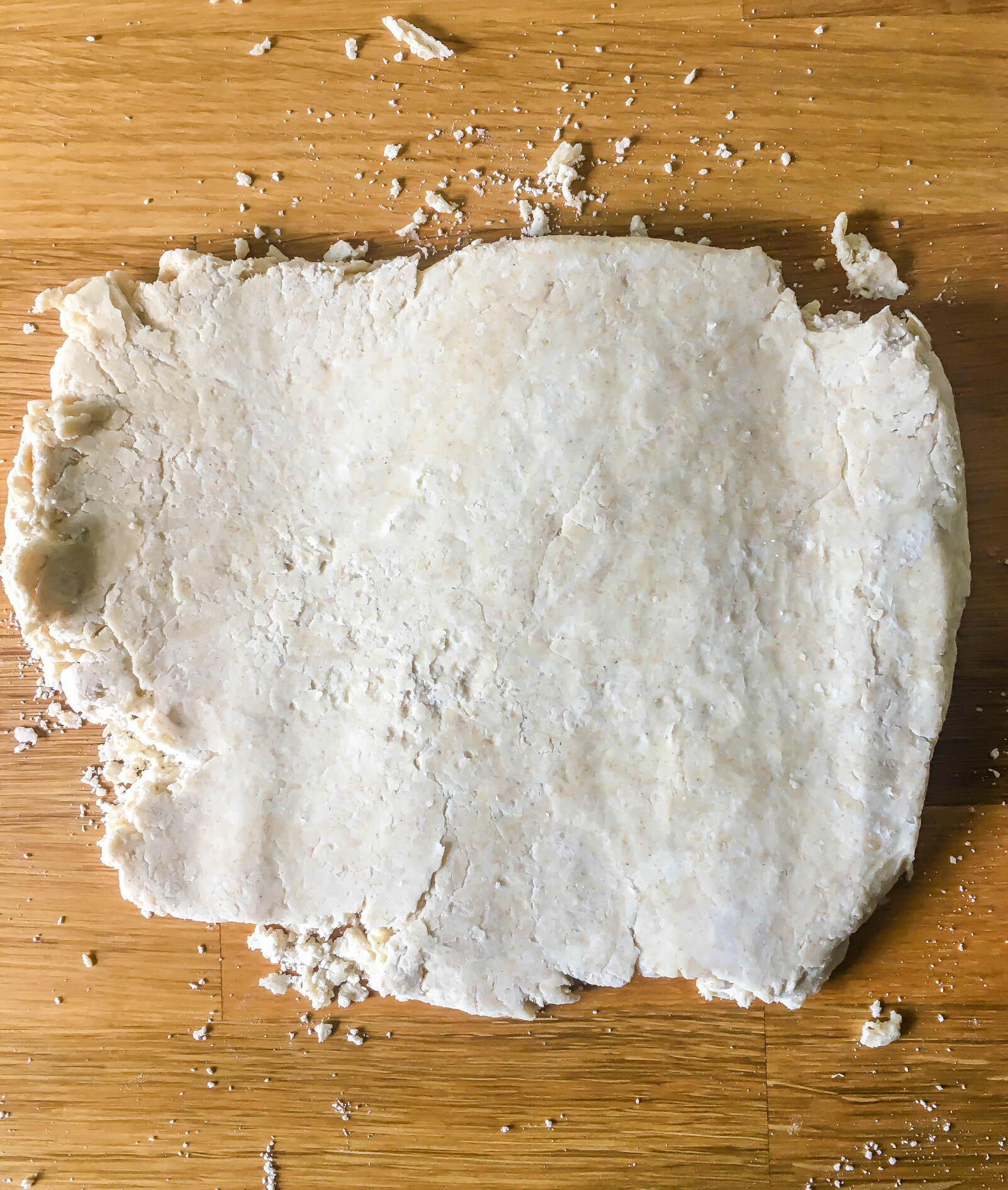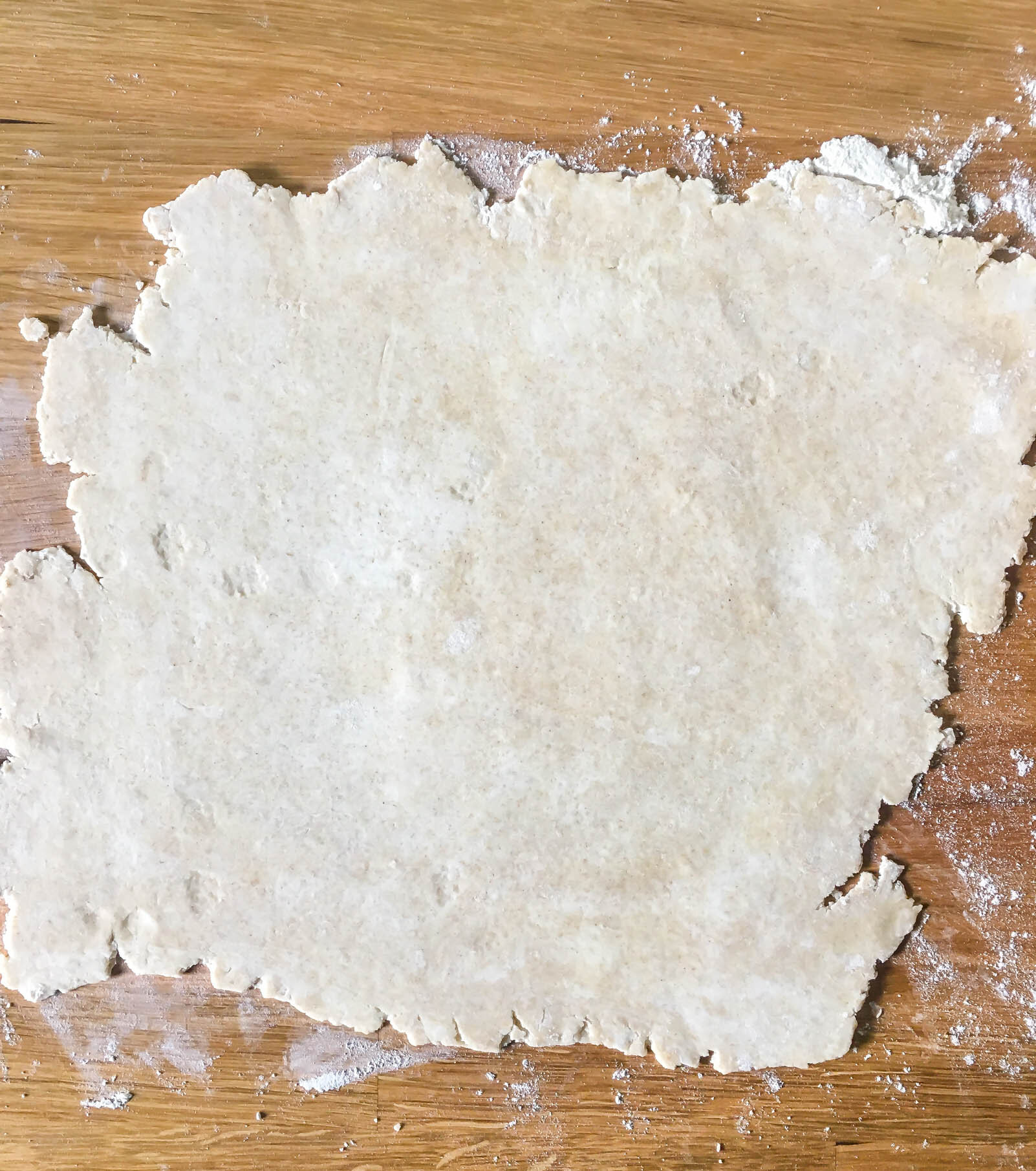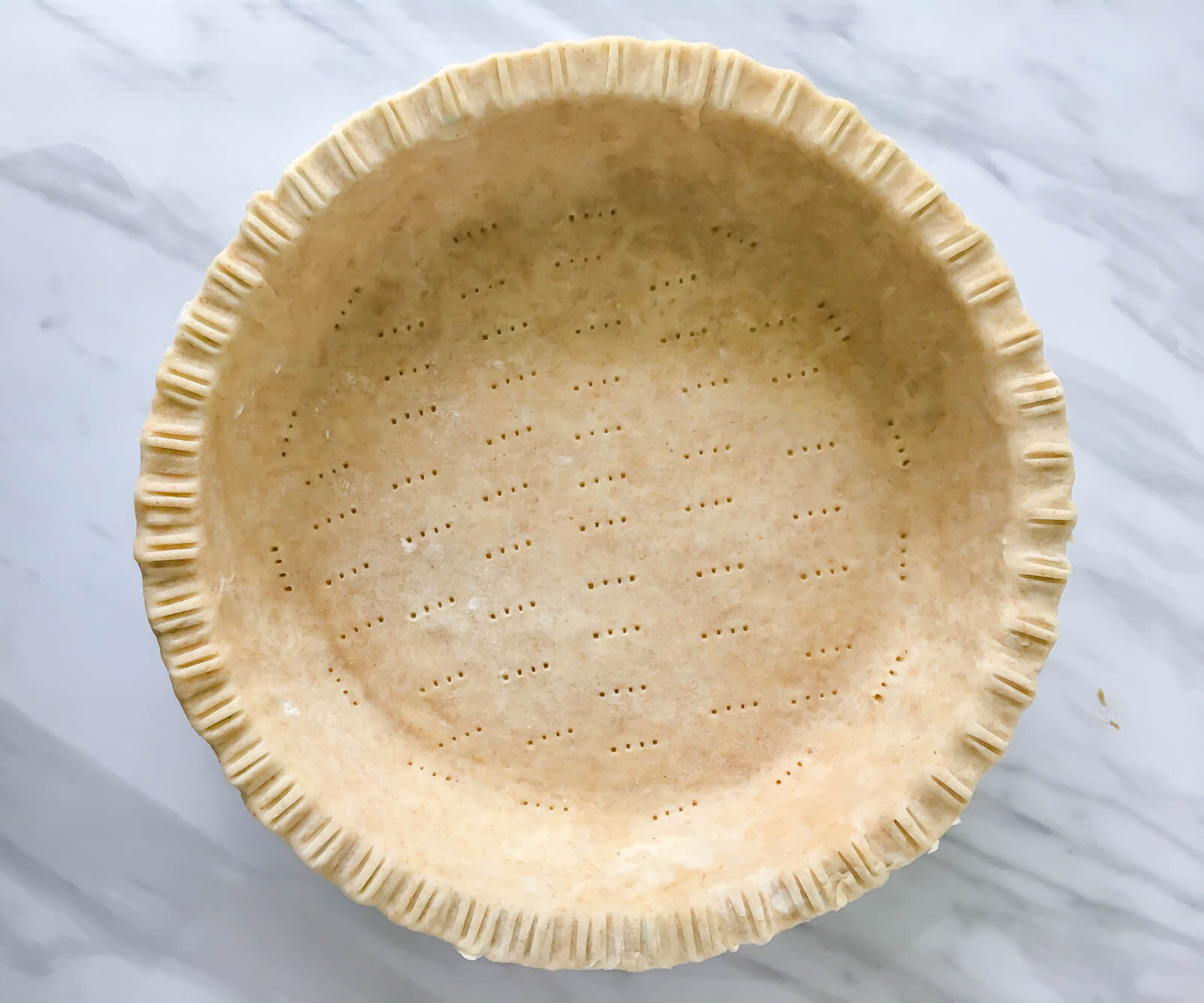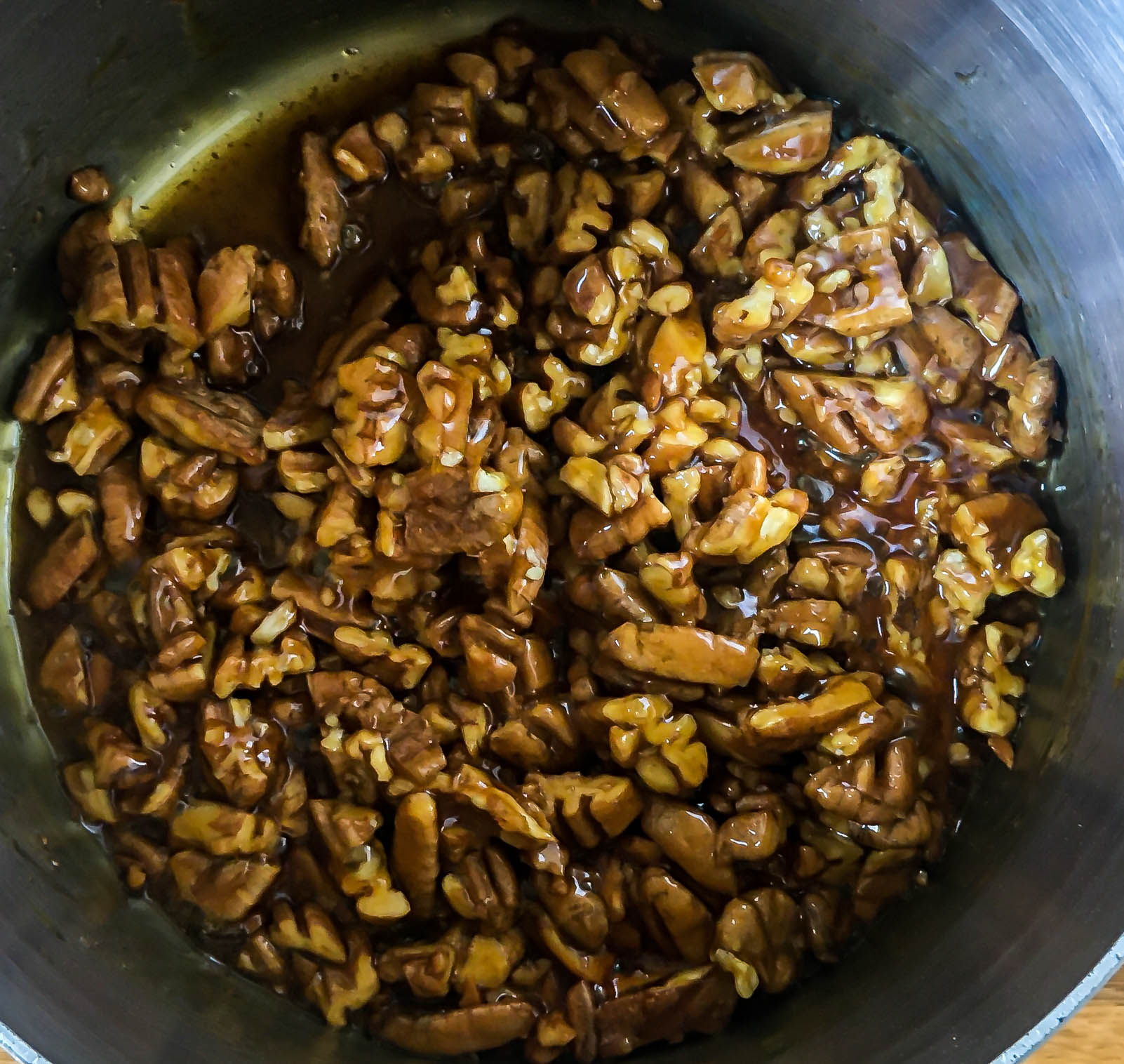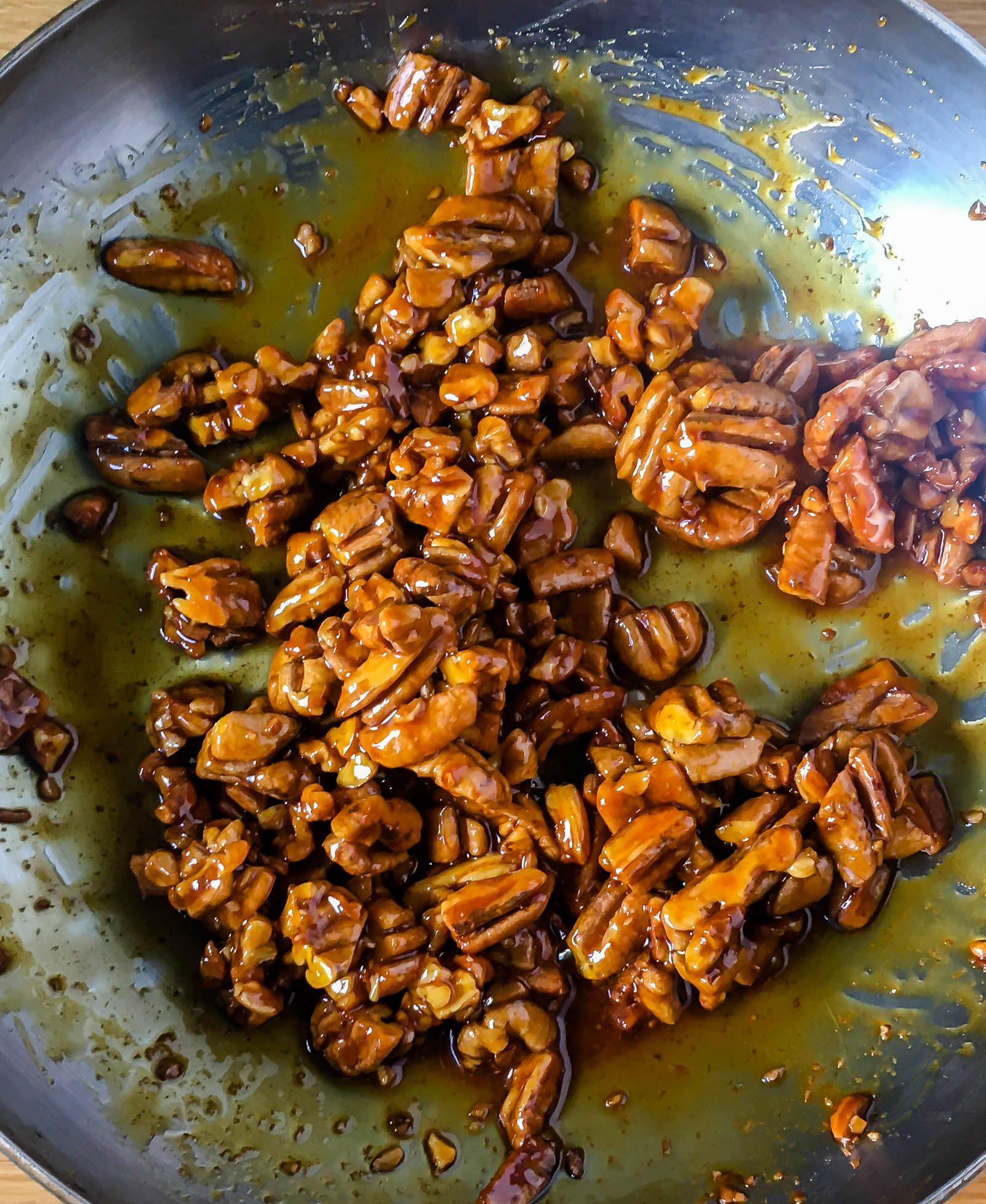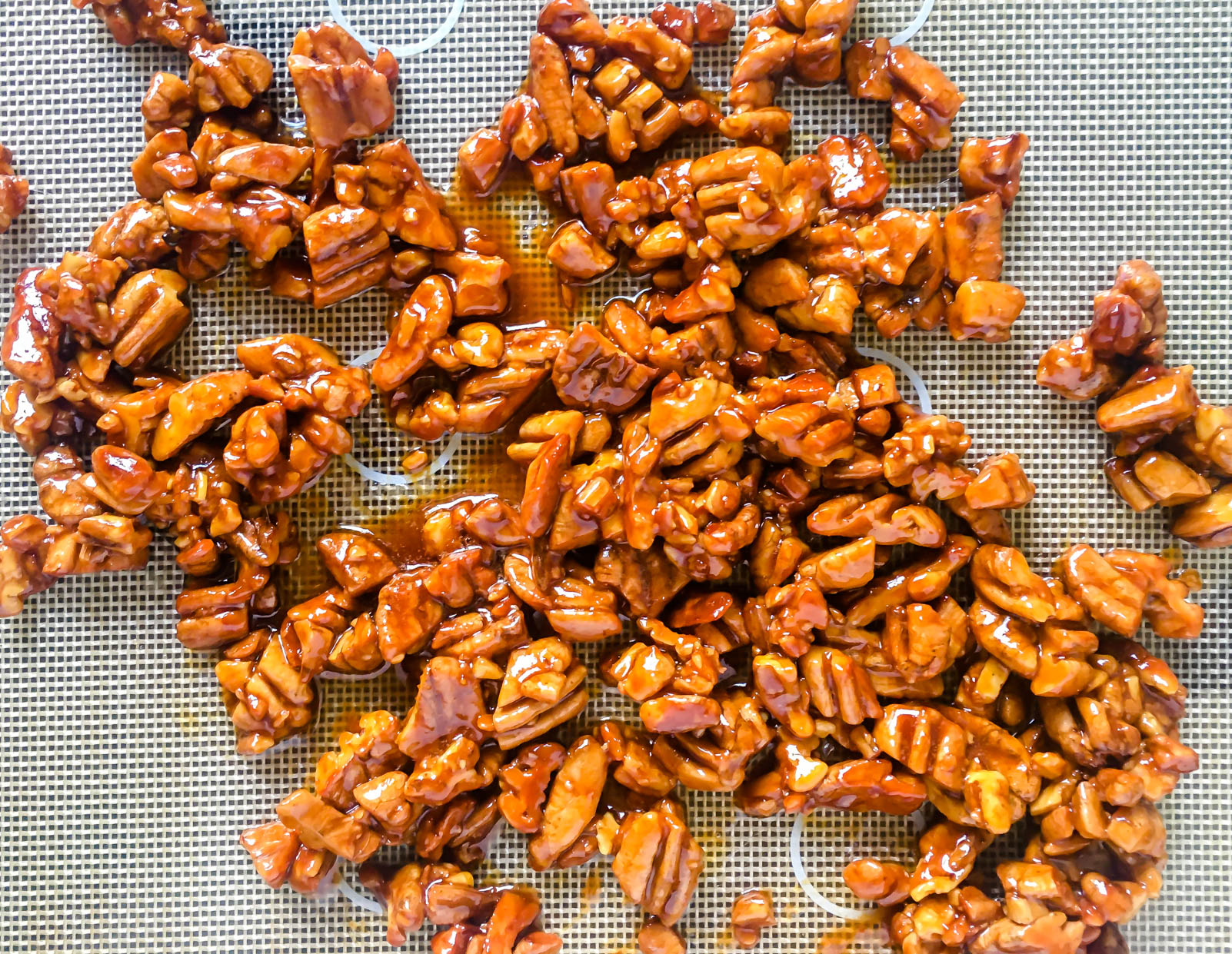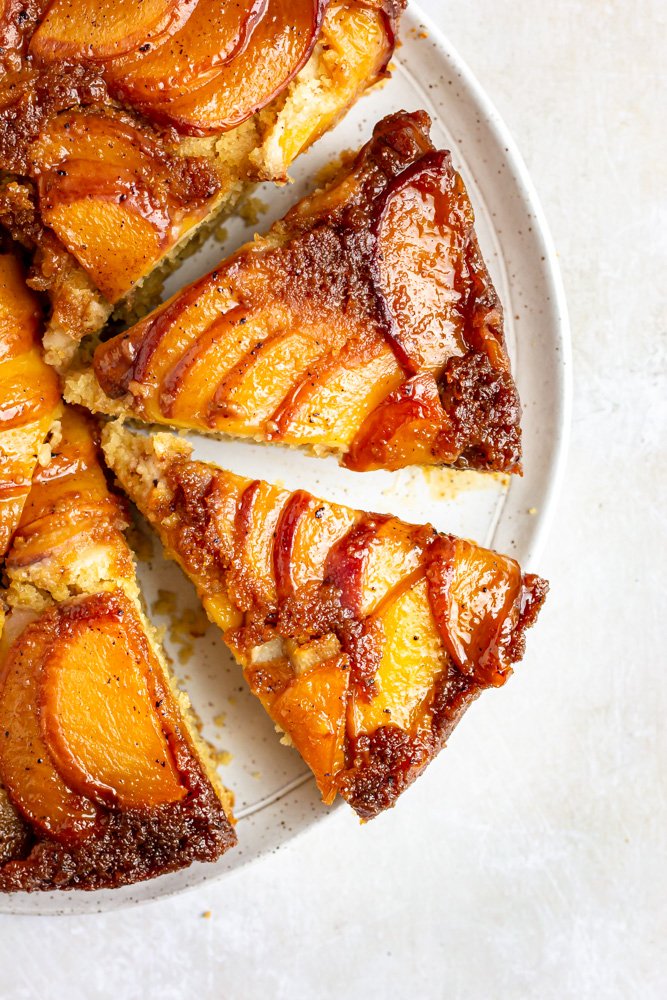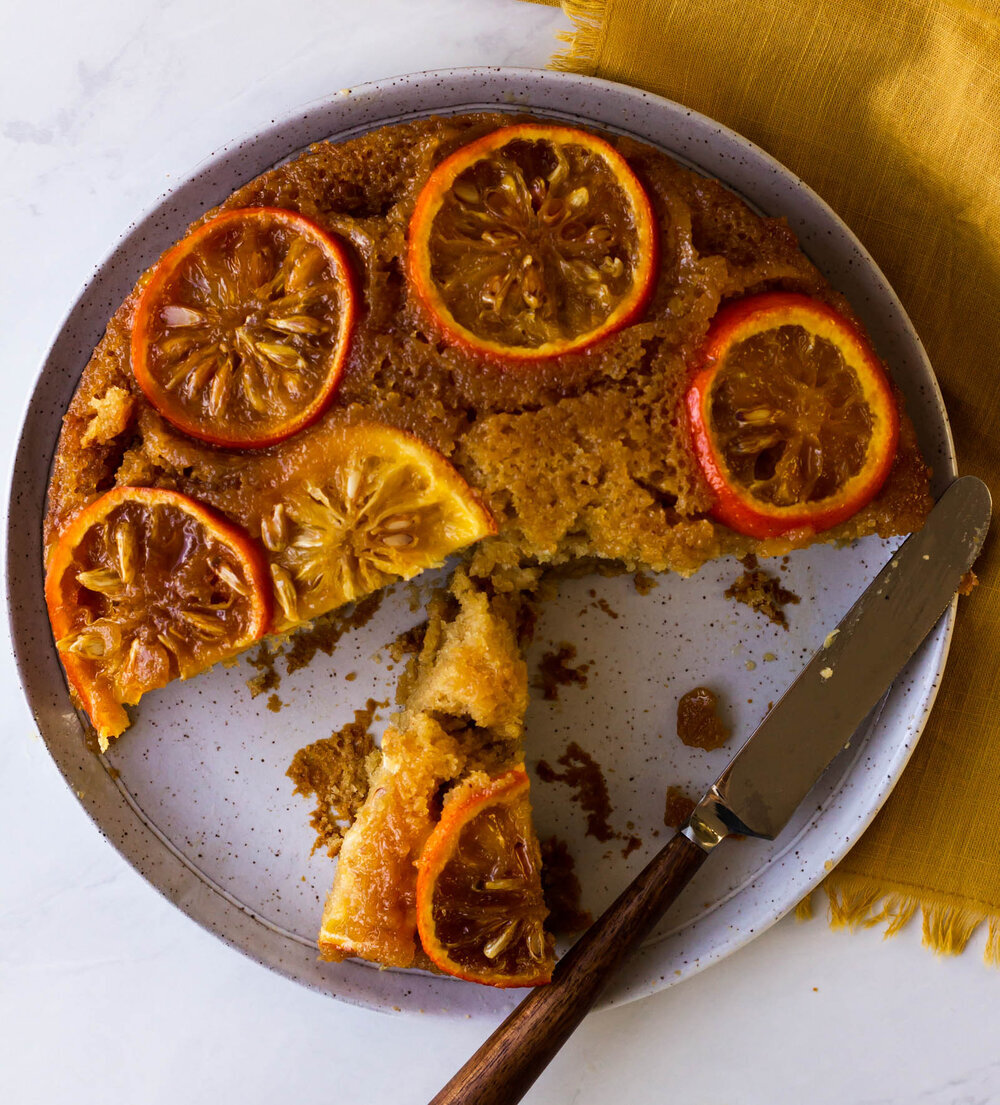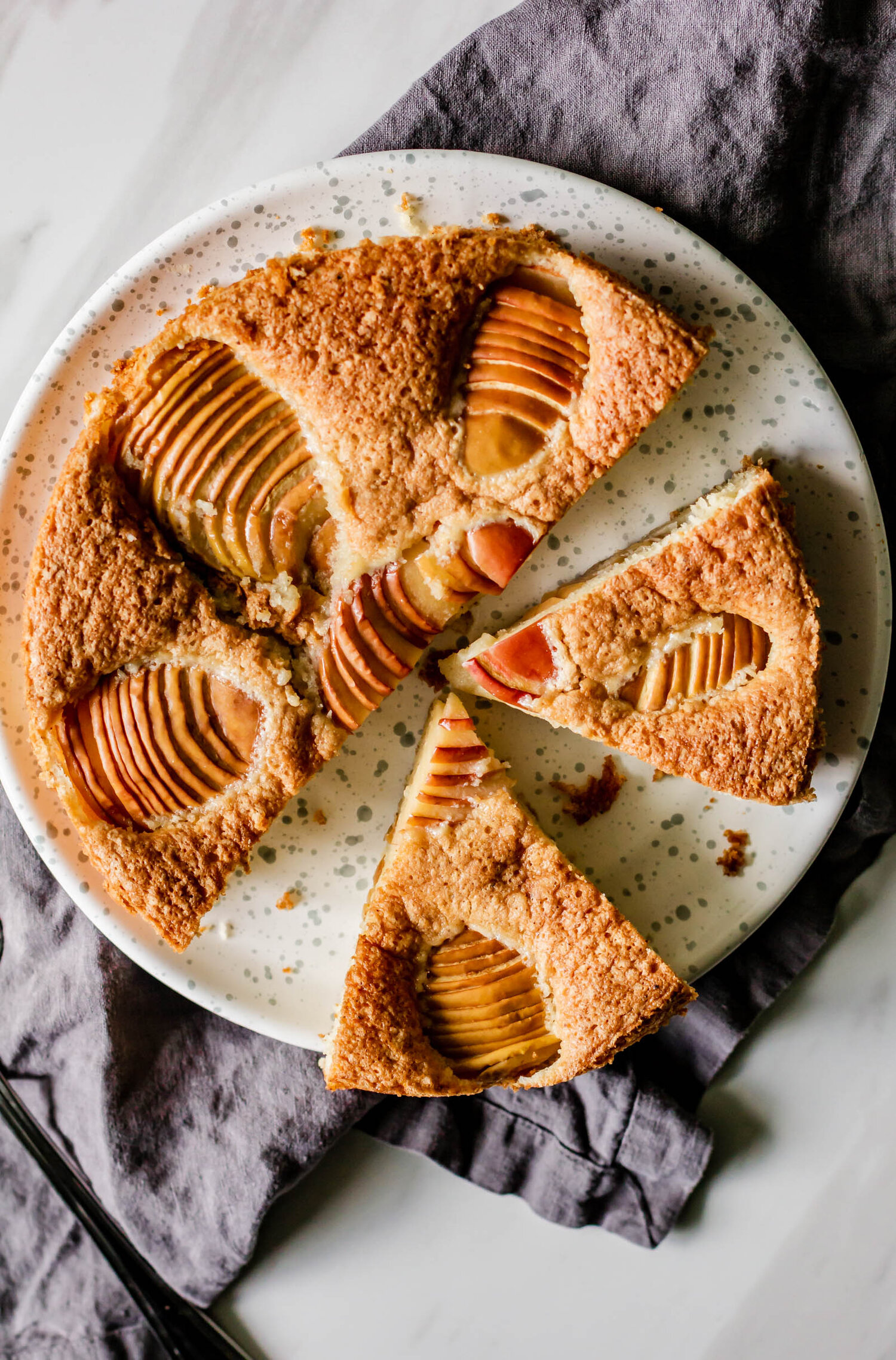Roasted Squash Pie with Brown Sugar Cinnamon Bavarian Cream and Candied Pecans
/Thanksgiving has always been one of my favorite meals of the year. Some people really love Christmas. Their stockings were hung by the chimney with care before they finished eating all of their Halloween candy. This is not me. I have never been able to jump into Christmas until after Thanksgiving. I love the creative opportunities that Thanksgiving provides and the dinner party fan-girl that I am really loves hosting Thanksgiving dinner. I am not a Thanksgiving traditionalist. I have made Cornish hens and roasted chickens, added squash to almost any dish on the table, and I would be 100% okay with skipping stuffing completely. My father, however, makes the term “traditionalist” feel like an understatement. He would love nothing more than for every single Thanksgiving dinner to look exactly like the ones he remembers from his childhood, and if I’m being honest, it does not mesh well with my unconventional Thanksgiving mentality. The last few years I’ve hosted Thanksgiving at my house and I’ve had to get a little creative and I’ve learned a few lessons in compromise so I figured this year, I would put together a little guide to help navigate the treacherous world of the turkey day table.
Today, I’m sharing a pumpkin pie inspired recipe that allows for endless modifications, to give the creative culinarians among us some opportunities to try something new while still appeasing the more traditionally-minded guests at the table. Without further ado, let’s break it down piece by piece.
the crust- For this pie crust, I used blend of all purpose flour and spelt flour. The addition of spelt flour gives a slightly nuttier, more complex flavor to your regular pie crust. You can play around with any alternative flours you’re interested in (I would love to try buckwheat or einkorn), just remember to keep alternative flours to 20% or less of the total weight so that you’re still able to achieve appropriate gluten structure.
the filling- In place of the traditional canned pumpkin, I used a large roasted butternut squash. Pumpkin is a little bit sweeter than butternut squash, but I really like the more vegetal flavor butternut gives. Pumpkin and butternut squash have very similar consistencies, so they are interchangeable when it comes to pies.
the topping- In my opinion, the very best part of a pumpkin pie is whipped cream. There needs to be enough whipped cream on the pie that you get some in each bite, but not so much that you end up eating cool whip by the spoonful at the end. I decided to make a brown sugar Bavarian cream and top this pie with a big thick layer, like a chocolate cream pie or a lemon meringue. The fun thing about a Bavarian cream is that it is simply a creme anglaise sauce, cooled and folded into whipped cream. If you wanted to serve this pie warm, you could make the brown sugar cinnamon anglaise and stop there, spooning the warm sauce over the warm pie to serve. That would be very delicious. Or you could follow the recipe exactly as written below and pile that Bavarian cream on top of the pie until you get lost in it’s fluffy layers. Or you could leave half the sauce as a creme anglaise, and make Bavarian cream with the other half, and let everyone at the table choose their own adventure. See what I mean, this is a very versatile pie.
the candied pecans- If you remember my post about all the things I learned from working in a restaurant pastry kitchen, one of my biggest takeaways was that one of the easiest ways to elevate your dessert is to add some texture. Pumpkin pie is traditionally very creamy. I wanted to give it a little crunch without changing the pie base itself so I simply added some candied pecans. I included some step by step photos in the recipe because working with caramel can be a little daunting. You can use walnuts or almonds, add a splash of bourbon at the end…it’s your dessert so really anything goes.
Roasted Squash Pie with Brown Sugar Cinnamon Bavarian Cream and Candied Pecans
Yield: 1 9” pie
Ingredients:
for the pie crust (adapted from Yossy Arefi):
10 oz all purpose flour
2 oz spelt flour
9 oz butter, cold and cubed
2 tsp apple cider vinegar
4 oz ice water *see note in recipe*
1 tsp salt
1 tbsp sugar
for the roasted squash filling (adapted from Bon Appetit):
1 large butternut squash, roasted (about 15 oz)
1/4 cup sugar
1/4 cup brown sugar
3 whole eggs
1 egg yolk
1 cup heavy cream
2 tbsp melted butter
1 tsp ground cinnamon
1 tsp ground ginger
1/4 tsp ground nutmeg
1/4 tsp ground cardamom
pinch of cloves
1/4 tsp salt
for the creme anglaise/bavarian cream:
3/4 cup heavy cream
1/4 cup half and half
3 cinnamon sticks
1 tsp vanilla
3 egg yolks
1/4 cup brown sugar
Pinch of salt
1 cup heavy cream #2
for the candied pecans:
1/2 cup sugar
1 cup chopped pecans
1 tsp vanilla extract
2 tbsp butter, softened
Pinch of salt
Procedure:
for the pie crust:
Toss together flour, salt, and sugar in a large bowl. Add in cubed butter and use your hands to cut the butter into the flour until the mixture resembles a very coarse sand, with a few chunks of butter the size of large peas left. I like to pinch each cube of butter between my fingers, flattening it out into the flour mixture.
In a glass measuring cup filled with ice, add 4 oz of cold water and the 2 tsp of apple cider vinegar and stir to combine. *You will probably not use all of this water!*
Drizzle ice water into the flour mixture a little at a time, tossing to combine. You want to add just enough water that the dough is able to hold together when you squeeze it in your first. Remember, you can always add more water to your dough, but you can’t take it away. Be conservative with your water!
Turn the pie dough onto a lightly floured work surface. Use your hands to press the dough into a rectangle. Fold the left third of the dough into the center, and then fold the right third of the dough on top of it, like you are folding a letter. Use a rolling pin to roll the dough out to about an 1” thick, divide it in half, and wrap each smaller square in plastic wrap. Refrigerate for at least an hour, and preferably overnight.
When you’re ready to bake, remove one disc from the refrigerator. On a lightly floured work surface, roll dough out into a large rectangle/circle. Make sure that it is large enough to cover your pie plate, with quite a bit leftover. Carefully drape the dough into your pie plate, pressing it gently into the corners. Trim the edges and crimp as you like.
Use a fork to poke holes in bottom of the pie dough and then set the whole thing in the refrigerator to chill while you make the filling.
for the roasted squash filling:
To roast a butternut squash: Preheat the oven to 400° F and line a baking pan with aluminum foil. Trim the top and bottom from squash so that it sets flat against the cutting board. Carefully, slice downwards from the top, dividing the squash in half vertically. Scoop the seeds out of the squash, drizzle each side with a little olive oil, and then place cut side down on your prepared pan. Roast for 25-30 minutes, until you can easily pierce the squash with a fork. Let cool completely and then scoop the flesh out from the squash and set aside. (Alternatively, you can buy butternut squash puree in a can at Trader Joe’s or substitute in canned pumpkin if you want to make a classic pumpkin pie.)
Preheat oven to 400° F.
Place butternut squash and all other filling ingredients in a blender and blend until combined and homogenous. Set aside.
Remove your pie crust from the refrigerator and line with parchment paper or foil. Fill with dried beans or pie weights, place on a baking sheet, and bake for 15-20 minutes, until the edges begin to brown. Remove beans/weights and parchment from the crust and return to oven. Decrease oven temperature to 350° F and return crust to bake another 15-20 minutes until golden.
Pour filling into crust and bake at 350° F for 40-45 minutes until filling is set and there is just a slight wobble. Remove from oven and cool completely then cover and transfer to the refrigerator to chill overnight.
for the creme anglaise/Bavarian cream:
Combine 3/4 cup heavy cream, half and half, and cinnamon sticks in a medium saucepan. Set over medium heat, stirring occasionally until simmering around the edges (between 180-190° F). Remove from heat, cover and let steep for 10-15 minutes. Remove cinnamon sticks.
Return the milk mixture to heat and bring back to a simmer.
In a medium bowl, whisk together egg yolks, brown sugar, vanilla extract, and salt.
When the milk is hot, pour some of it (about half) into the egg mixture, whisking continually. Pour the egg mixture back into the milk and return to heat. Heat, stirring continually, until thickened and sauce coats the back of a spoon. You don’t want this to boil, but you want it get up to about 180° F.
Strain through a mesh strainer and set aside to cool completely.
To make the Bavarian cream, whip 1 cup cold heavy cream to medium peaks. Gently fold in chilled anglaise sauce and then spread cream topping on chilled pie. Chill for at least 30 minutes.
for the candied pecans:
In a large skillet set over medium heat, make a dry caramel by sprinkling sugar in a single layer on the bottom of the skillet. Cook, without stirring until little liquid puddles appear on the surface. Use a wooden spoon to gently push the sugar around the outsides of the pan into the center and then sprinkle in another layer of sugar, repeating the process until all of your sugar is in the skillet. Cook, stirring only when at the liquid stage, until the caramel turns a medium amber color.
Quickly add the chopped pecans, tossing quickly to coat and continue cooking until caramel turns a deep amber color.
Remove from heat and stir in butter, vanilla, and salt. Pour caramelized pecans onto a silat-lined sheet pan and spread out. Let cool completely and then break apart and store in a cool, dry place.
Sprinkle as generously or as conservatively as you like on your finished pie.


